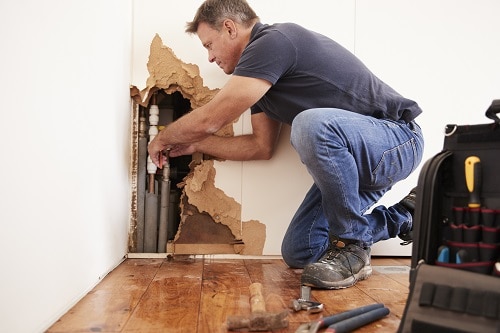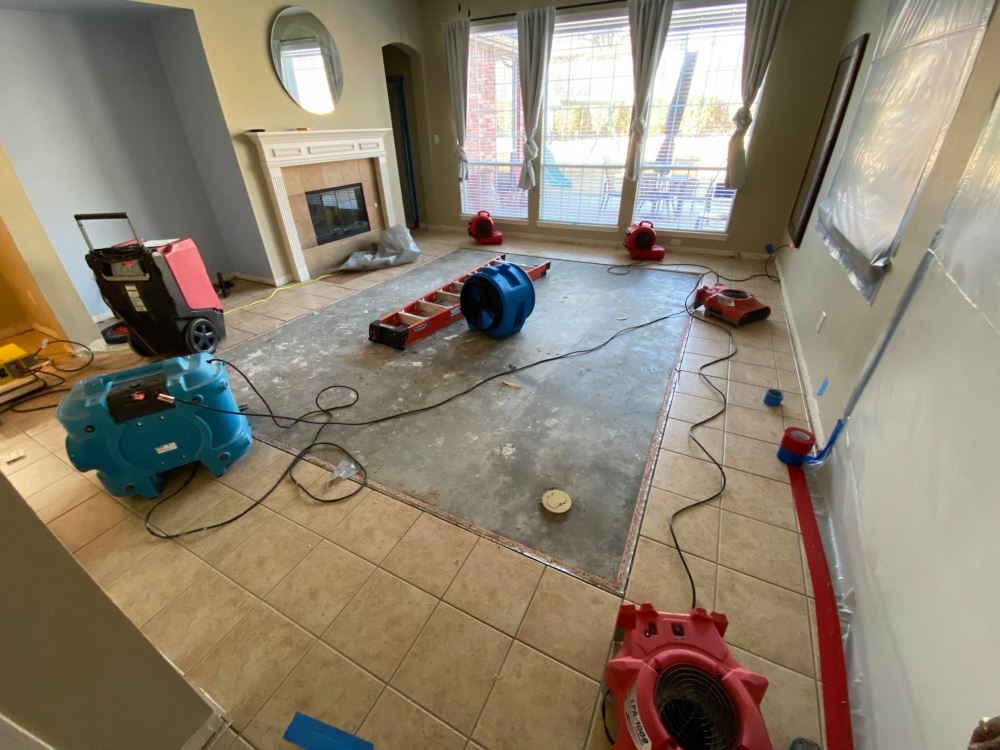Water Damage Restoration 101: Understanding the Process and Price
Water damage can strike suddenly, leaving property owners in a state of complication. Recognizing the remediation procedure is crucial for reliable recuperation. From evaluating the damage to choosing the best provider, each action affects the overall outcome and price. Elements such as the sort of water damage and necessity likewise play a substantial role. What are the details strategies utilized in reconstruction, and exactly how can one get ready for prospective expenses?
Kinds Of Water Damage

First Assessment and Inspection

Water Removal Strategies
Complying with the preliminary evaluation, reliable water removal techniques are employed to reduce damage and stop further concerns. These methods involve using specific equipment such as industrial-grade vacuums and completely submersible pumps - Water Damage Restoration. The selection of approach depends upon the volume of water present and the sort of products impacted. For standing water, completely submersible pumps are commonly utilized for quick elimination, while vacuums are suitable for removing water from carpetings and upholstery. In addition, progressed methods like water removal mats might be employed for hard-to-reach areas - Flood Cleanup Services. The objective is to remove as much water as possible, decreasing the potential for mold development and structural damage. Prompt and efficient water removal is necessary in the general water damage remediation process
Drying Out and Dehumidification Process
When the water removal is complete, the drying and dehumidification procedure comes to be vital to bring back the damaged area. This phase usually employs industrial-grade dehumidifiers and air moving companies to successfully minimize wetness degrees. The dehumidifiers attract wet air, getting rid of excess moisture, while air movers distribute air to increase evaporation. Tracking tools is usually utilized to track humidity and temperature level levels, making sure ideal drying out conditions. The period of this process can vary depending on the degree of the water damage and ecological factors. It is crucial to extensively dry all influenced materials, consisting of wall surfaces, floor covering, and home furnishings, to stop mold growth and architectural damage. Correct implementation of this action is crucial for an effective reconstruction outcome.
Cleansing and Sanitizing Afflicted Locations
A thorough preliminary assessment and inspection of affected locations is vital to recognize contamination degrees once the drying out procedure is total. Flood Cleanup Services. Efficient cleaning methods and appropriate items need to then be employed to get rid of particles and stains. Sanitization and disinfection methods are vital to ensure that unsafe microorganisms are removed, restoring the space to a secure problem.
Preliminary Evaluation and Inspection
Prior to beginning any type of remediation initiatives, an extensive preliminary analysis and evaluation of the impacted areas are important for effective cleansing and disinfecting. This procedure includes determining the extent of water damage, figuring out the resource of the water invasion, and evaluating the materials influenced. Examiners commonly try to find signs of mold and mildew growth, structural integrity issues, and damaged possessions. The analysis additionally includes checking moisture degrees using specific devices to ensure no hidden water pockets stay, as these can bring about more complications. Documenting the findings is important for preparing the next action in the reconstruction procedure. An in-depth preliminary evaluation makes it possible for remediation specialists to develop a targeted strategy for efficient cleansing and sanitizing, inevitably lessening damage and health and wellness risks.
Cleansing Strategies and Products
Effective cleaning and sanitizing of water-damaged locations need a range of strategies and products tailored to the particular materials influenced. For permeable surface areas like drywall and carpets, removal approaches are important to remove excess dampness, followed by deep cleansing with specialized detergents. Non-porous materials such as floor tile or steel can be cleaned up making use of commercial-grade cleansers that efficiently get rid of pollutants. Steam cleansing is an additional effective strategy, especially for carpets and upholstery, as it utilizes heats to remove bacteria and mold (Flood Cleanup Services). Furthermore, environmentally friendly products are progressively prominent for their safety and efficacy - Water Damage Restoration. Inevitably, selecting the ideal cleaning techniques and items not only guarantees immediate cleanliness yet additionally help in protecting against further damage and health and wellness risks related to water intrusion
Sanitization and Disinfection Techniques
When resolving water damage, correct sanitization and sanitation techniques are necessary to assure the safety and health of the afflicted setting. After first cleaning, surfaces have to be treated with proper disinfectants to get rid of virus, mold and mildew, and bacteria that grow in wet conditions. Usual approaches consist of making use of EPA-approved chemical anti-bacterials, which can be used through spraying or wiping techniques. Furthermore, ultraviolet (UV) light systems can effectively sterilize areas by counteracting microorganisms without harsh chemicals. The option of technique typically depends upon the kind of products influenced and the level of contamination. Inevitably, extensive sanitization not only restores a secure home however also helps stop future wellness risks associated with sticking around dampness and mold and mildew development.

Repair Services and Restoration Options
Examining the damage created by water direct exposure is important for establishing the proper repair work and remediation choices. Property owners may face various concerns, consisting of damaged drywall, distorted flooring, and endangered structural elements. Relying on the level of the damage, repair services might involve changing sections of drywall, setting up brand-new flooring, or strengthening architectural light beams. In situations of severe damage, full replacement of afflicted materials may be required. Additionally, expert conservators commonly recommend using wetness meters to assess covert dampness levels before selecting the very best course of activity. It is important to act without delay to avoid mold growth and additional degeneration. Selecting the ideal choices not just recovers the home yet likewise assures lasting safety and functionality.
Aspects Influencing Restoration Prices

The extent of water damage straight influences the remediation sets you back house owners can expect to incur. Aspects such as the resource of the water, the period of exposure, and the affected materials substantially influence prices. For example, clean water damage from a busted pipe is usually less pricey to bring back contrasted to damage brought on by sewer. In addition, the degree of contamination dictates the need for specialized cleansing and disposal services, further raising expenses. Geographic location additionally plays a function, as local labor rates and accessibility of repair services can vary. Ultimately, the seriousness of the reaction affects expenses; quicker treatments commonly bring about reduce general costs by preventing additional damage. Comprehending these aspects is important for homeowners when approximating repair expenses.
The 3 primary types of water damage are classified based on contamination levels: tidy water, grey water, and black water. A comprehensive initial evaluation and assessment are vital actions in the water damage reconstruction procedure. For standing water, submersible pumps are typically used for rapid elimination, while vacuums are suitable for removing water from carpets and furniture. The level of water damage directly impacts the restoration costs homeowners can anticipate to sustain. Clean water damage from a busted pipe is typically less costly to restore compared to damage triggered Read Full Article by sewage.